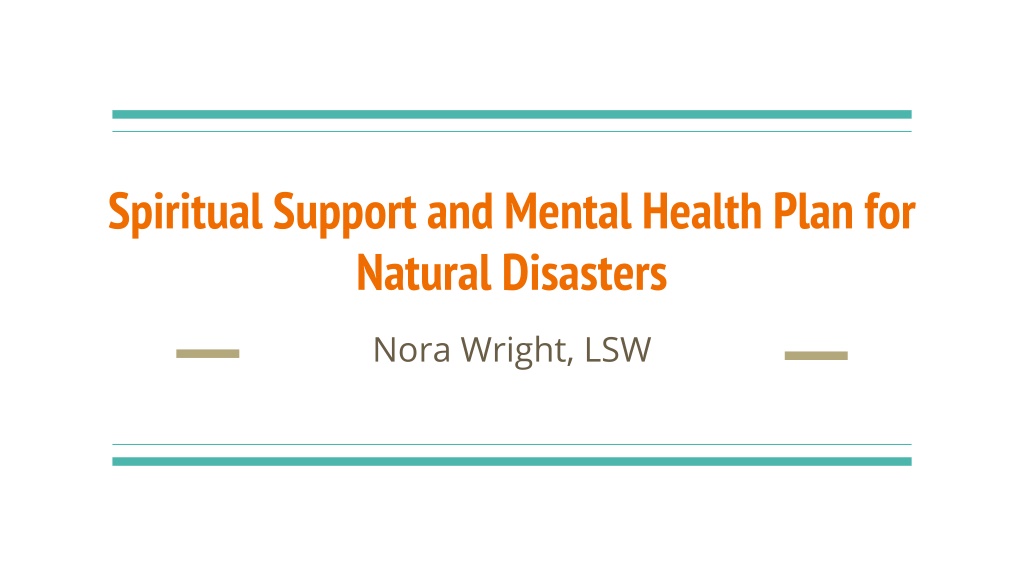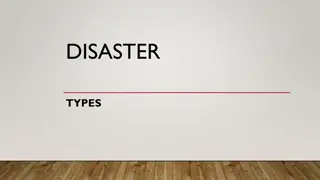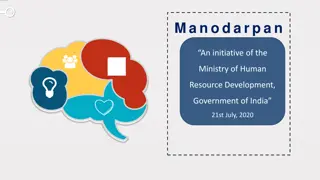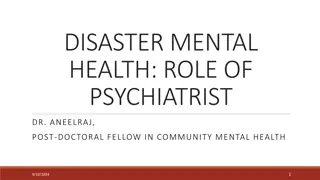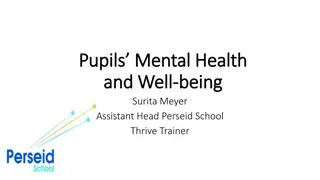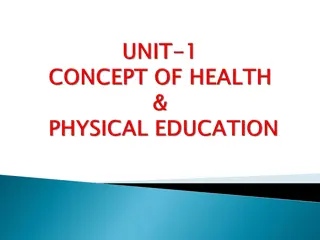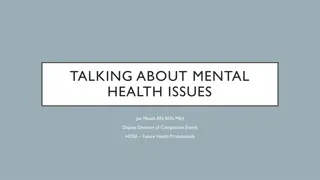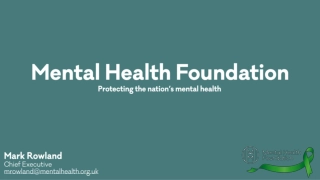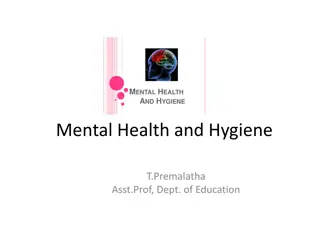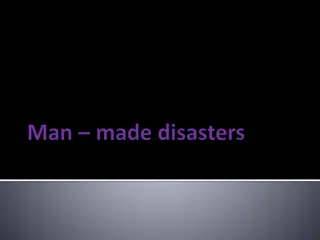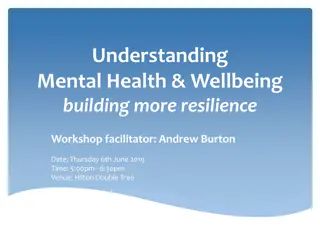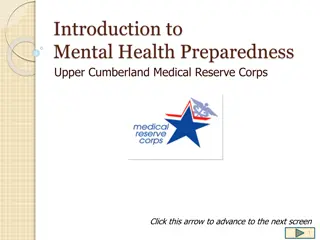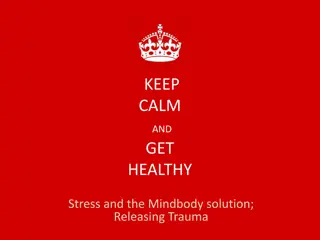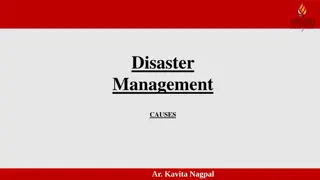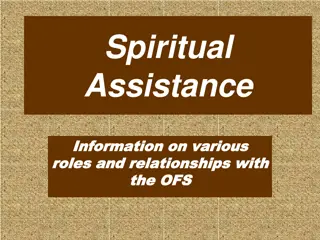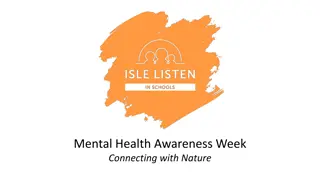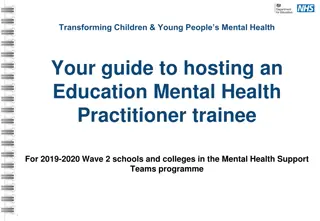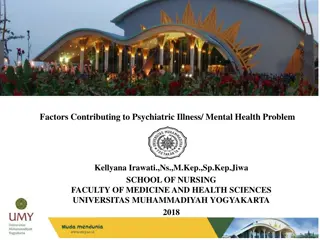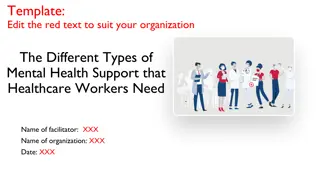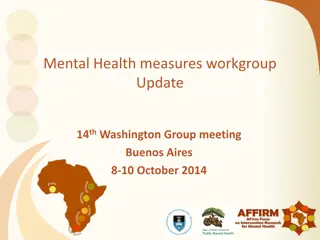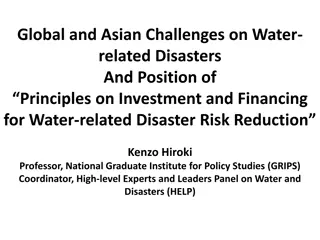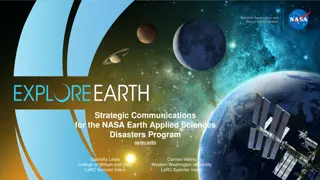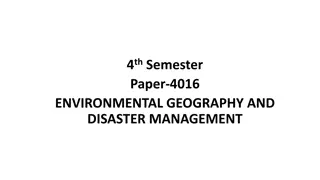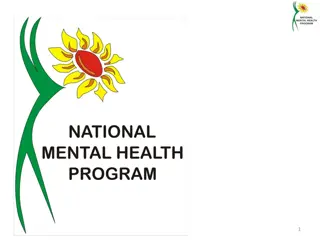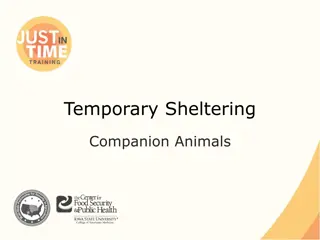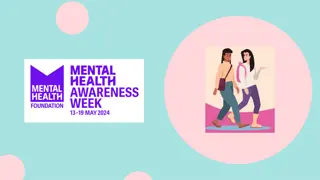Supporting Mental Health and Spiritual Well-being During Natural Disasters
Explore strategies to support at-risk populations, understand children's reactions, identify risk and protective factors, foster post-traumatic growth, and help children cope through creative expressions and flexibility in the aftermath of natural disasters.
Download Presentation

Please find below an Image/Link to download the presentation.
The content on the website is provided AS IS for your information and personal use only. It may not be sold, licensed, or shared on other websites without obtaining consent from the author. Download presentation by click this link. If you encounter any issues during the download, it is possible that the publisher has removed the file from their server.
E N D
Presentation Transcript
Spiritual Support and Mental Health Plan for Natural Disasters Nora Wright, LSW
At risk populations - Young children - Parenting and/or pregnant mothers - Older adults - Those with physical and or intellectual disabilities - cumulative) Those who had had experience with previous trauma (because the effects of trauma are - Those who have been marginalized or oppressed or have historical trauma
Reactions from children Until a new routine is established, there may be issues with: safety, stress, and extended grieving. Emotions can include: hopelessness, depression, guilt and withdrawal Severe cases: classroom behavior and academic performance may be impacted
Risk & Protective Factors Risk factors: Any influence that increases the probability of onset, regression to a more serious state or the maintenance of a problem condition Protective factors: a combination of positive forces that contributes to adaptive outcomes in the face of challenges or trauma How the meeting responds Listen to children reflect Limit media exposure Calm present adults Prayerful activities that give meaning to the what has happened Seeing a traumatic scene over and over again on social media Proximity of event to the individual Coping with multiple losses at the same time
Fostering Post-Traumatic Growth Our students and meeting members will look to us to be leaders and to model healthy processing and to offer resources for them to do that. Our goal is to: Foster resilience and ultimately create an environment where there can be post-traumatic growth. So many people believe that even though they have survived a traumatic experience and been negatively impacted, they have also grown or been strengthened by the experience.
Helping children cope Children cannot always express through words Use art and dramatic play. Have kids make posters about what happened and have a parade I survived the flood. Create peer listening teams. Be flexible. It is good to have a schedule but you may need to pause or suspend certain rules. Consider that students may not have access to the right clothing or supplies.
Spiritual stress reactions to disaster Questioning justice and meaning Feeling far from previously held beliefs Suddenly turning away from or to God Feeling isolated from God or one s religious community Being angry at God or spiritual leaders Feeling disconnected from familiar religious practices
Guiding principles for providing spiritual care: Meet, accept and respect persons exactly as they are Do no harm Nurture and encourage each person s own spiritual perspective to be a source of strength in difficult times Protect confidentiality Respect social diversity and cross-cultural settings Function at levels appropriate to your training and educational background Help to understand and normalize what happened
Spiritual Care Best Practices: Supporting Healing Understanding and normalizing what happened Carrying out spiritual care through the practice of presence Identifying and solving immediate, concrete problems Encouraging individuals to talk about their experiences and being an active and supportive listener Recognizing normal stress reactions; making referrals to address immediate problems Attending to anniversaries and other important dates (National Disaster Interfaith Network)
A moment to gather in community, a chance to process what is going on, a time to see healthy communication and support modeled. Role of a Friends School or Meeting Spiritual Support: Worship
Worksheet Questions When would a meeting for worship in response to a natural disaster occur? Would you wait until there is a programmed meeting scheduled? Would you call a meeting later in the day? Would you wait until children had been with their families or do it before if there was time? Who would run it? Where would it be if your site was unusable? What queries or format would you use?
Who is on call to support students and families or meeting members in a crisis? Role of a Friends School or Meeting What skills do they need to be effective? What is the immediate mental health support plan? Mental Health Support: Counseling What resources would you put in place long term to help students/members cope?
Members of the larger community are harmed or lost February 2011 A gas explosion killed five residents in Allentown including an infant. What would your meeting or school do in response to this?
How the local Lutheran church responded: Held worship to process, allowed media to attend to publicize that people were gathering and to announce a larger event (vigil) that all could go to. Hosted subsequent prayer vigil Made individual counseling available
May 2019 There is such extreme flooding and strong wind that students cannot go home for six hours Southside Elementary School and New Caney High School, Cleveland, TX During flooding of over 14 inches in one day, campuses went into lock down around 3:00 pm because buses and cars could not arrive to pick children up. What would your meeting or school do in response to this?
Tips Limit exposure to media while at school if a crisis is active (hard with phones and social media) Consider business as usual or actively promoting spiritual and connecting activities Be methodical in transitions to maintain calmness and efficiency
Feedback Reflections
When do/would we, as a religious and spiritual organization, provide extra services to: Who do we serve during and after a natural disaster? our students and meeting members? the larger community ? to a particular population such as first responders, or neighbors seeking refuge?
Community Outreach What are things you can do during and after a disaster that are not just for your members or students? Imagine that your community was severely impacted by a natural disaster but the meeting building or school remains intact although without electricity. 1. How might you serve the community in its time of need? 2. How might you use the assets that you have to respond to the great need in the community? 3. What steps are necessary to make these imagined plans real?
Application: There is severe hurricane damage and first responders are active nearby. Many have been hurt. February 2009: Zion Lutheran Church, Clarence Center, NY A plane crashed nearby and first responders came from a distance. Would your school offer anything to these professionals? If so, what?
Their response: Opened its doors to first responders for two weeks Provided food and water and a place to rest during the day Offered spiritual counsel and emotional support
Resources FEMA 1000 Stafer, Stronger Smarter: A Guide to Improving School Natural Hazard Safety (2017) Congregational Disaster Preparedness Guidebook: Lutheran Disaster Response CDC: Returning to School After a Disaster: Tips to Help Your Students Cope
